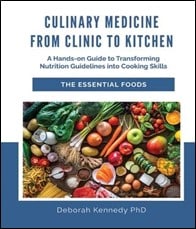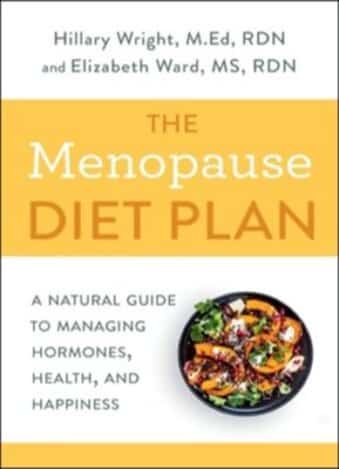
Doris is a 69 year old woman who lives in an assisted living facility and has recently had problems with “irregularity”, her polite word for constipation. She thought it was a symptom of aging, but the problem was really starting to bother her. Despite her embarrassment, she summoned up her courage and talked with the facility’s nurse practitioner (NP), who ruled out any serious concerns. After asking a few questions, the NP decided to refer her to the facility’s registered dietitian nutritionist (RDN), Suzette, to evaluate her eating habits. Doris has lots of questions, many of which we will explore here.
What is Considered Normal Bowel Function?
Normal bowel function varies from person to person. Constipation is generally defined as infrequent bowel movements or difficult passage of stools that persists for several weeks or longer. A more specific definition is outlined by the Rome IV criteria as:1
- Fewer than three spontaneous bowel movements per week
- Straining for more than 25% of defecation attempts
- Lumpy or hard stools for at least 25% of defecation attempts
- Sensation of anorectal obstruction or blockage for at least 25% of defecation attempts
- Manual maneuvering required to defecate for at least 25% of defecation attempts
In addition, the patient must rarely have loose stools present without use of a laxative and must not meet Rome IV criteria for irritable bowel syndrome (IBS).
Is Constipation Related to Aging?
Studies suggest that prevalence increases with age.2 Aging can result in physiologic changes that affect the movement of stool through the colon.2 However, constipation is not inevitable with aging.3 It can also be attributed to some medical conditions, use of certain medications, a decrease in fluid intake, and a decrease in physical activity that often accompanies aging.2,3
Dietary Fiber: How Much and What Type?
For good health, the daily recommended amount of fiber is at least 25 grams for women and 38 grams for men3 but there are nuances to fiber intake that can affect bowel function. Fiber can be described as either soluble or insoluble. Soluble fiber dissolves in water to form a gummy gel, slowing digestion. Sources include dried beans, oats, barley, bananas, potatoes and soft parts of apples and pears.4,5 Insoluble fiber does not dissolve in water and helps produce softer, bulkier stools that increase fecal transit time. Sources include whole bran, whole grain products, nuts, corn, carrots, grapes, berries and peels of apples and pears.4,5 All fiber is important to overall good health and GI function, but insoluble fiber may be more effective than soluble fiber in treating constipation.6
Increasing the amount of fiber in the diet gradually will help limit possible side effects such as bloating and gas. When increasing fiber, fluid intake should also increase to as much as 2 liters per day.5 Consuming more than 50-60 grams of fiber daily may increase abdominal distance and result in excessive gas.5
A Happy Outcome for Doris
Doris’s constipation doesn’t meet the Rome criteria, but it might be treatable with lifestyle changes. Doris and Suzette work together to determine dietary changes to increase all types of high-fiber foods and add more fluids. Doris is learning to enjoy whole grain breads and cereals, legumes, and more fruits and vegetables, all of which are available in the dining room at her assisted living. Doris has limited mobility and uses a walker. The facility has long hallways, and Doris now makes it a priority to walk the halls for 10-15 minutes once or twice daily. Most of all she is relieved that her irregularity is not due to any serious health issue, and it is not just a symptom of aging. Doris is much happier and feeling much better now that she has a more “regular” life.
Originally published January 2, 2020.
References
- Brasson MD. Constipation. Medscape web site. Updated March 30, 2022. Accessed October 12, 2022.
- Raymond JL, Callihan L. Nutrition in aging. In: Krause and Mahan’s Food & the Nutrition Care Process. 15th ed. St. Louis MO; Elsevier. 2021:373-389.
- Academy Nutrition Care Manual. Constipation in older adults. https://www.nutritioncaremanual.org/topic.cfm?ncm_category_id=31&lv1=255616&lv2=255633&lv3=268680&ncm_toc_id=268680&ncm_heading=Older%20Adult%20Nutrition. Accessed October 13, 2022.
- Soluble vs Insoluble Fiber. MedlinePlus web site. Accessed October 13, 2022.
- VanReken DW, Kay RE, Ireton-Jones CS. Medical nutrition therapy for lower GI disorders. In: Raymond JK, Morrow K. Krause and Mahan’s Food & the Nutrition Care Process. 15th ed. St. Louis, MO; Elsevier:544-578.
- Freuman TD, Truong-Leikauf M. Nutritional Implications of gastrointestinal disorders. In: Bernstein M, Munoz N. Nutrition for the Older Adult. 3rd Edition. Burlington MA: Jones and Bartlett Learning; 2020: 217-251.












